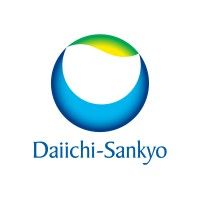预约演示
更新于:2025-05-07
Postoperative ileus
术后肠梗阻
更新于:2025-05-07
基本信息
别名 Postoperative ileus、Postoperative ileus (diagnosis)、Postoperative ileus (disorder) + [3] |
简介- |
关联
13
项与 术后肠梗阻 相关的药物作用机制 μ opioid receptor拮抗剂 |
在研适应症 |
最高研发阶段批准上市 |
首次获批国家/地区 美国 |
首次获批日期2008-04-24 |
靶点 |
作用机制 motilin刺激剂 |
在研机构 |
原研机构 |
最高研发阶段批准上市 |
首次获批国家/地区 日本 |
首次获批日期2001-04-05 |
靶点 |
作用机制 PLG抑制剂 |
原研机构 |
最高研发阶段批准上市 |
首次获批国家/地区 日本 |
首次获批日期1965-08-31 |
183
项与 术后肠梗阻 相关的临床试验NCT05344417
Impact of Low Pressure Pneumoperitoneum on Postoperative Ileus and Gastrointestinal Dysfunction in Patients Undergoing Laparoscopic Large Bowel Surgery
The investigators are testing the hypothesis that lower pressure pneumoperitoneum during laparoscopic large bowel surgery protects the bowel from postoperative ileus and bowel dysfunction leading to faster recovery and discharge from the hospital. Our study will focus on the effects of high or low intraperitoneal pressure as well as pressure variations on the course of postoperative ileus, time to hospital discharge, and postoperative gastrointestinal dysfunction in adult patients undergoing laparoscopic large bowel resection (i.e., sigmoidectomy and right colectomy). A randomized parallel group study will be conducted involving 5 arms of surgical patients to test whether differences on postoperative ileus outcome parameters occur between high (15 mm Hg) and low pressure pneumoperitoneum (8-12 mm Hg), as well as whether there are differences between the 2 insufflation devices that provide constant or variable intrabdominal pressure throughout the laparoscopic surgery. For high pressure pneumoperitoneum, either neostigmine or sugammadex are used for reversal of moderate neuromuscular blockade. For low pressure pneumoperitoneum, sugammadex is used for reversal of deep neuromuscular blockade. The investigators plan to use 2 types of gas insufflation devices, one of which will provide a relatively stable pressure level throughout surgery (AirSeal® device), and the second one will provide a more variable pressure (Olympus standard insufflation device). Using both pressure modalities, the investigators will study the effects of different pressure characteristics on the course of postoperative ileus, duration of in-hospital treatment, pain level, and the stability of hemodynamic and respiratory parameters during surgery. Changes in intrabdominal pressure during the surgery will be monitored and recorded using a custom software for later analysis of fluctuations in pressure to relate them to outcomes. Other parameters will be obtained from EPIC (IHIS) medical charts. In addition, clinical data on postoperative ileus will be correlated with experimental outcomes from in vitro exploratory studies done using human samples of peritoneal lavage fluid, serum, and a small portion of the surgically removed bowel from each patient (that is otherwise discarded). A panel of inflammatory markers will be analyzed and biochemical, imaging, histological, immunochemical, molecular signaling, and glial activation studies will be done to evaluate the potential mechanisms of dysfunction associated with postoperative ileus.
开始日期2025-09-30 |
申办/合作机构 |
TCTR20250403003
Effectiveness of post-operative domperidone use for postoperative bowel ileus prevention after elective gynecologic laparotomy: a double-blinded randomized controlled trial
开始日期2025-03-27 |
申办/合作机构 |
ChiCTR2400093676
A muticenter randomized controlled study on the effect of gastrointestinal vibration capsule system on patients with postoperative ileus after major gastrointestinal surgery
开始日期2025-01-01 |
申办/合作机构- |
100 项与 术后肠梗阻 相关的临床结果
登录后查看更多信息
100 项与 术后肠梗阻 相关的转化医学
登录后查看更多信息
0 项与 术后肠梗阻 相关的专利(医药)
登录后查看更多信息
2,799
项与 术后肠梗阻 相关的文献(医药)2025-12-01·Techniques in Coloproctology
Pelvic inlet closure with bladder peritoneal flap reduces postoperative ileus after abdominoperineal resection
Article
作者: Keskin, M ; Tuncak, M ; Bulut, M T ; Bayraktar, A ; Kulle, C B ; Özgür, I ; Bozkurt, H A
2025-06-01·European Journal of Obstetrics & Gynecology and Reproductive Biology
Clinical results after laparoscopic sacrocolpopexy for genital prolapse − a high success rate: A three-year follow-up study
Article
作者: Staneva, Galina Ivelinova ; Tomov, Slavcho Tomov ; Ivanov, Yasen Trifonov ; Totev, Tihomir Pankov ; Yanev, Plamen Ivanov ; Bouzalov, Stefan Angelov
2025-04-11·Medicine
Postoperative obstruction of recurrent esophageal hiatal hernia: A case report
Article
作者: Wang, Cunchuan ; Liu, Weifeng ; Lian, Dandan ; Su, Chao
1
项与 术后肠梗阻 相关的新闻(医药)2024-02-08
HERPEN, The Netherlands, Feb. 8, 2024 /PRNewswire/ -- Orexa B.V., a Dutch life sciences company that is developing a new medicine that increases food intake and supports health in patients, announces that the first patient has been dosed in a Phase 2 clinical trial in the prevention of postoperative ileus. The trial investigates whether patients who undergo major abdominal surgery will develop less gastrointestinal disturbances and will recover more quickly.
Study 2022-503113-31-00-IN-002 (EudraCT number) is a multi-center, randomized, double-blind, placebo-controlled study to investigate the efficacy of Orexa's lead compound ORE-001. It will enroll 100 to 120 female patients who undergo gynecologic surgery requiring longitudinal laparotomy. The study runs at multiple centers in Germany with lead investigator Prof. Alexander Mustae from Universitätsklinikum Bonn (UKB). The first patient is dosed on 11 January 2024 in Bonn.
"This is a major milestone for a company like Orexa to start its first clinical Phase 2 study," says Prof. Ard Peeters. He continues: "Finally we will be able to test our drug in patients. This first study is in a group where we can possibly prevent a so-called postoperative ileus. This is a serious complication, which affects up to 50% of patients in several patient groups and leads to patients being unable to eat and therefore recovering more slowly, resulting in prolonged hospitalization."
About Orexa:
Orexa is developing a drug that increases food intake. The markets where increased food intake can lead to substantial health benefits are large. Orexa focuses primarily on the recovery of patients who have undergone surgery, anorexia patients and people with malnutrition (sarcopenia / cachexia). The company is founded in 2016 and is based in Herpen (North Brabant), The Netherlands.
For more information, see .
临床2期
分析
对领域进行一次全面的分析。
登录
或

Eureka LS:
全新生物医药AI Agent 覆盖科研全链路,让突破性发现快人一步
立即开始免费试用!
智慧芽新药情报库是智慧芽专为生命科学人士构建的基于AI的创新药情报平台,助您全方位提升您的研发与决策效率。
立即开始数据试用!
智慧芽新药库数据也通过智慧芽数据服务平台,以API或者数据包形式对外开放,助您更加充分利用智慧芽新药情报信息。
生物序列数据库
生物药研发创新
免费使用
化学结构数据库
小分子化药研发创新
免费使用





